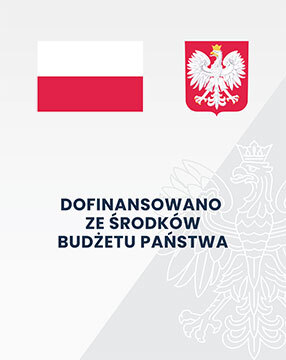Koncepcja quantified self i jej konsekwencje dla projektowania usług bibliotecznych w świetle literatury przedmiotu
Magdalena Wójcik
Afiliacja: Instytut Studiów Informacyjnych, Uniwersytet Jagielloński, Polska
Abstrakt
Teza/cel – Przedmiot artykułu stanowi koncepcja quantified self. Celem jest określenie jej potencjału dla projektowania usług bibliotecznych. Metoda – Zastosowano metodę analizy i krytyki piśmiennictwa. W oparciu o wyszukiwanie prowadzone w katalogu Biblioteki Narodowej i katalogu Worldcat, bazie abstraktowej LISTA, repozytorium ELIS oraz wybranych bazach wielodziedzinowych (np. Science Direct, Wiley Online Library) określono stan badań nad koncepcją quantified self. Pod uwagę wzięto wyłącznie prace opublikowane w języku polskim i angielskim w latach 2010-2018. Wyniki – Omówiono główne założenia koncepcji quantified self, jej związki z przetwarzaniem wielkich danych (ang. big data) oraz miniaturyzacją sprzętu elektronicznego i rozwojem wearable computing, a także związki z koncepcją Internetu Rzeczy (ang. Internet of Things). Określono możliwości wykorzystania założeń podejścia quantified self w projektowaniu usług bibliotecznych. Wnioski – Przeprowadzona analiza pokazuje duży potencjał koncepcji quantified self dla projektowania innowacyjnych usług bibliotecznych, a także dla procesów ich ewaluacji, doskonalenia i promocji.
Słowa kluczowe
Monitorowanie aktywności; Projektowanie usług; Usługi biblioteczne; Użytkownik biblioteki
Bibliografia
Al-Azwani, Iman; Aziz, Hassa (2016). Integration of Wearable Technologies into Patient’s Electronic Medical Records. Quality in Primary Care [online], [dostęp: 30.07.2018]. Dostępny w WWW: <http://primarycare.imedpub.com/integration-of-wearable-technologies-into-patientselectronic-medical-records.php?aid=11118>.
Becker, Bernd (2014). The quantified self: Balancing privacy and personal metrics. Behavioral & Social Sciences Librarian, vol. 33, issue 4, pp. 212-215.
Bushhousen, Ellie (2014). The Quantified Self movement and hospital librarians. Journal of Hospital Librarianship, vol. 14, issue 1, pp. 88-93.
Hammarfelt, Björn; Rijcke, Sarah; Rushforth, Alexander (2016). Quantified academic selves: The gamification of science through social networking services. Information Research, vol. 21, number 2, [online], [dostęp: 17.08.2018]. Dostępny w WWW: <http://www.informationr.net/ir/21-2/SM1.html#.W3aUk_kyXIU>.
Gilmore, James (2016). Everywear: The quantified self and wearable fitness technologies. New Media & Society, vol. 18, issue 11, pp. 2524-2539.
Gimpel, Henner; Nissen, Marcia; Görlitz, Roland (2013). Quantifying the quantified self: A study on the motivations of patients to track their own health, [online], [dostęp: 17.08.2018]. Dostępny w WWW: <https://pdfs.semanticscholar.org/7ccb/e2e99078317a8657a2d362cdeb755b323cf4.pdf>.
Hauptmann, Philipp (2015). The Handling of Big Data in the Quantified Self Movement. In: Emanuel von Zezschwitz et al (Ed) Human Computer Interaction in the Internet of Things Era. Munich: Department of Computer Science Media Informatics Group, p. 34-39.
Iwasiński, Łukasz (2017). Quantified Self. Self-tracking a problem tożsamości. Zagadnienia Informacji Naukowej, t. 55, nr 2, s. 126-136.
Lee, Victor (2013). The Quantified Self (QS) movement and some emerging opportunities for the educational technology field. Educational Technology, vol. 53, number 6, pp. 39-42.
Lupton, Deborah (2016). The quantified self. Cambridge: Polity.
Mathur, Akhil, et al. (2015). Tiny habits in the giant enterprise: understanding the dynamics of a quantified workplace. In: Proceedings of the 2015 ACM International Joint Conference on Pervasive and Ubiquitous Computing. New York: ACM.
Morschheuser, Benedikt, et al. (2014). Gamifying quantified self approaches for learning: an experiment with the live interest meter. In: Ilona Buchem, Graham Attwell, Gemma Tur (Eds) Learning and Diversity in the Cities of the Future. Berlin: Logos Verlag, pp. 68-80, online], [dostęp: 30.07.2018]. Dostępny w WWW: <https://bit.ly/2MRGrXP>.
NMC Horizon Report: 2015 Library Edition (2015), [online], [dostęp: 30.07.2018]. Dostępny w WWW: <https://www.nmc.org/publication/nmc-horizon-report2015-library- edition/>.
Prince, J. Dale (2014). The quantified self: Operationalizing the quotidien. Journal of Electronic Resources in Medical Libraries, vol. 11, issue 2, pp. 91-99.
Rapp, Amon, et al. (2018). Designing a personal informatics system for users without experience in self-tracking: a case study. Behaviour & Information Technology, vol. 37, issue 4, pp. 335-366.
Sharon, Tamar (2017). Self-tracking for health and the quantified self: Re- articulating autonomy, solidarity, and authenticity in an age of personalized healthcare. Philosophy & Technology, vol. 30, issue, pp. 93-121.
Shin, Grace; Cheon, Eun Jeong; Jarrahi, Mohammad Hossein (2015). Understanding Quantified-Selfers’ Interplay between Intrinsic and Extrinsic Motivation in the Use of Activity-Tracking Devices. In: iConference 2015 Proceedings [online], [dostęp: 29.07.2018]. Dostępny w WWW: <https://www. ideals.illinois.edu/bitstream/handle/2142/73740/427_ready.pdf?sequence=2& isAllowed=y>.
Swan, Melanie (2013). The Quantified Self: Fundamental Disruption in Big Data Science and Biological Discovery. Big Data, vol. 1, number 2, pp. 85-99.
Quantified Self Institute (2016), [online], [dostęp: 17.08.2018]. Dostępny w WWW: <https://qsinstitute.com/about/what-is-quantified-self/>.
Wojciechowski, Jacek (2014). Biblioteki w nowym otoczeniu. Warszawa: Wydaw. SBP.
Wójcik, Magdalena (2016). Big data w zarządzaniu informacją: przegląd wybranych zagadnień. W: S. Cisek Inspiracje i innowacje: zarządzanie informacją w perspektywie bibliologii i informatologii. Kraków: Biblioteka Jagiellońska, s. 61-70.
Wójcik, Magdalena (2016b). Internet of Things – potential for libraries. Library Hi Tech, vol. 34, issue 2, pp. 404-420.
Wójcik, Magdalena (2016c). Najnowsze trendy w IT – potencjał dla bibliotek. Przegląd Biblioteczny, vol. 84, z. 4, s. 575-589.
Yoo, Sanghyun; Lemos, Jonatan; Finn, Ed (2017). Nellodee 2.0: A Quantified Self Reading App for Tracking Reading Goals. In: Panayiotis Zaphiris; Andri Ioannou (Eds) International Conference on Learning and Collaboration Technologies. Cham: Springer.
Afiliacja: Instytut Studiów Informacyjnych, Uniwersytet Jagielloński, Polska
Biogram:
Dr hab. Magdalena Wójcik, adiunkt w Instytucie Studiów Informacyjnych Uniwersytetu Jagiellońskiego. Jej zainteresowania badawcze obejmują problematykę wykorzystania najnowszych technologii informacyjno-komunikacyjnych w usługach instytucji książki. Najważniejsze publikacje to: Rozszerzona rzeczywistość w usługach informacyjnych bibliotek (Kraków, 2018), Web 2.0 w działalności usługowej instytucji książki (Kraków, 2013), Internet of Things – potential for libraries, „Library Hi Tech” 2016, vol. 34, issue 2, pp. 404-420 oraz Holograms in libraries – the potential for education, promotion and services, Library Hi Tech 2018, vol. 36, issue 1, pp. 18-28.a
Autor składa oświadczenie o oryginalności przesłanego tekstu, a w umowie wydawniczej przenosi na rzecz Wydawcy nieodpłatnie majątkowe prawa autorskie w zakresie jednorazowego opublikowania dzieła.
CC BY-NC-ND 4.0 Uznanie autorstwa - Użycie niekomercyjne - Bez utworów zależnych 4.0 Międzynarodowe




